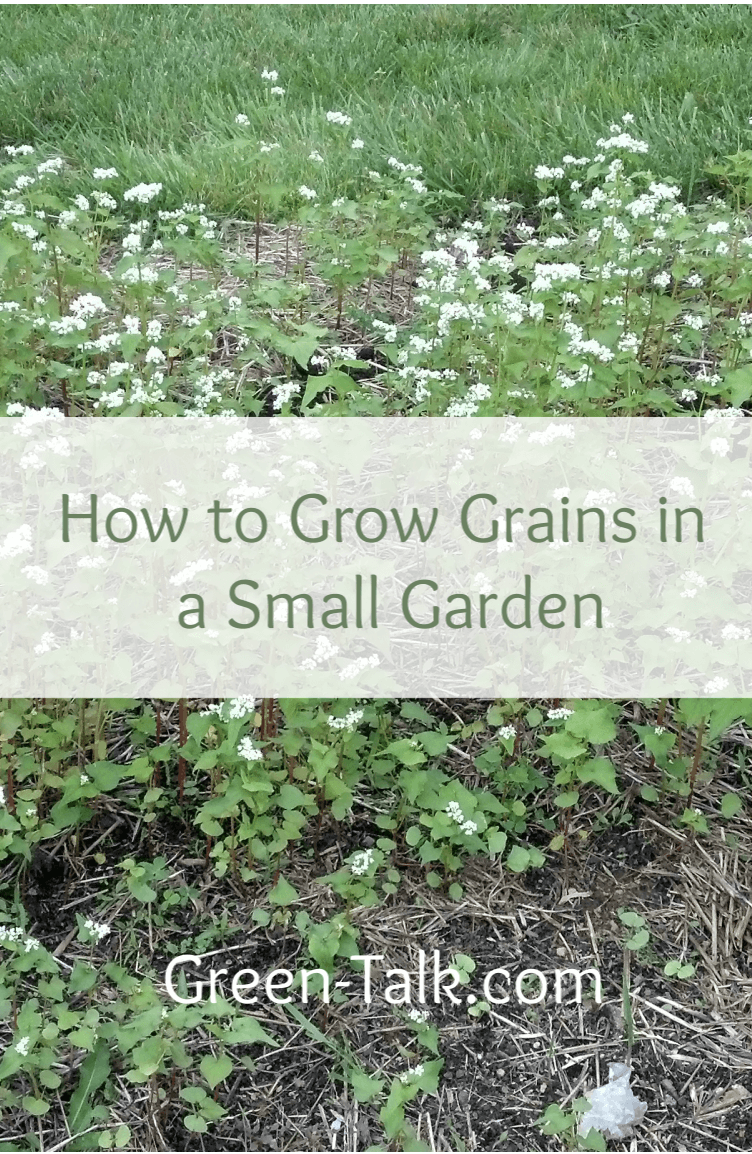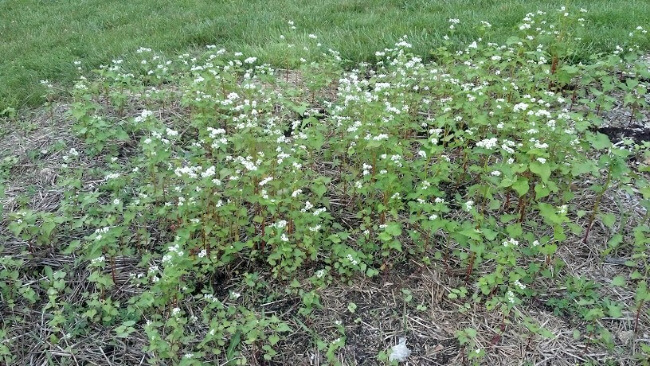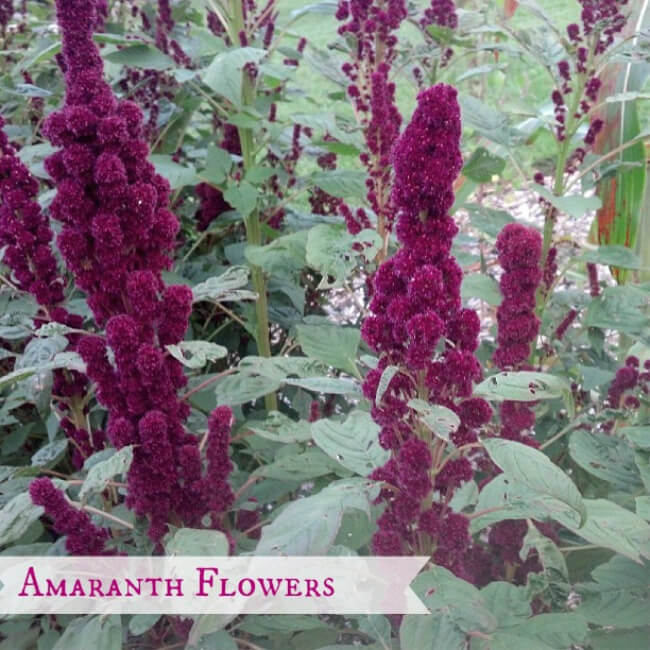How to Grow Grains in a Small Garden
5 min read
Green Talk® –

Ever thought of growing your grains in your garden? Worried you don’t have enough room? I grow small amounts of grain in my raised beds or plots dedicated to herbs. So, if you ever had the itch to grow your grains, I will show you how.
In the past, I have grown amaranth, buckwheat, sorghum, quinoa, and oats. Since my family is gluten free, I have never attempted to grow wheat.
In this article, I will focus on some of the easier grains such as buckwheat, sorghum and amaranth.
Oats are great to grow but you need to grow hulless oats if you want to use them for baking.
As for quinoa, I never had good luck growing it. Maybe my climate isn’t cold enough? When it did grow, it was small and the seeds shattered before I was able to harvest the plant.
Grow Grains: Buckwheat

Buckwheat is one of my favorite plants. I use it as one of my flours in gluten free baking. I make buckwheat pancakes!
When buckwheat is in bloom, it is beautiful and many pollinators will appreciate your efforts.
Plus, as compared to the other grains listed above, it is one of the shortest and thinnest grains to grow. It grows to about 2 feet tall and can be inter-planted with other plants.
One year, I planted it among my kale hoping to fool the moths where my kale was. Unfortunately, I could only fool a moth so long.
Where to Grow Buckwheat?
Originally I grew buckwheat in a bed. It would re-seed every year.
One year I decided to grow it in one of my raised beds. This was a mistake since the tender, skinny stems just topped over. If you want to grow it in your raised beds, make sure at least half of the bed is full of soil (not mostly compost).
When to Plant
So, how do you grow buckwheat? Buckwheat is a cool weather plant. I seed my beds at the end of June for a fall harvest. (I live in zone 6.) Mother Earth News advises planting buckwheat three months before your killing frost.
As I mentioned above, buckwheat re-seeds so the following year, you could possibly get two crops.
To seed, just broadcast the seed in your designated area, put compost over the seeds, and keep watering until seedlings emerge. Be careful not to sprinkle too many or you will crowd the plants. In turn, the plant will be spindly, and your yield will not be as good. (I have done this.)
The seeds germinate relatively quickly.
Harvest when 75{533314f2540bdd33bbc04377fd32ff805adcd56cc20929d47e9b088aa1bb02ce} of the seeds are dark. If you wait until 100{533314f2540bdd33bbc04377fd32ff805adcd56cc20929d47e9b088aa1bb02ce} of the seeds are dark, many will have fallen to the ground.
I then mill the seeds and sift the hulls from the mixture.
Even if you don’t want to grow it for the seeds, buckwheat makes an excellent green manure and the bees adore it.
To learn more about growing and harvesting buckwheat, read HERE and HERE.
Grow Grains: Amaranth

The Amaranth flowers are quite showy. But the seeds are the powerhouse since they are high in protein. A cup of cooked amaranth has 9 grams of protein.
Also, the young leaves taste like earthy spinach. The leaves are an acquired taste.
Many people use it in their cereals or add a portion to their other grains when baking bread.
Before you get too excited about growing this plant, bear in mind, it can become invasive. Its tiny seeds travel far and wide in your garden. I planted them once and never had to plant again. The red seedling reappears somewhere in my garden every year. I simply replant them.
How to Grow Amaranth
Similar to buckwheat, Amaranth grows best in the soil, not a raised bed. The flower heads are quite heavy and will topple over in a raised bed.
I start amaranth seeds in the house and plant them after my frost date. Space them a foot apart to allow them to grow. As I mentioned above, you can harvest them for their young leaves, flowers, or seeds.
I harvest my amaranth right before a frost. Simply rub a portion of the flower and see if the seeds fall into your hands. If they do, it is time to harvest; otherwise most of the seeds will find their way to other parts of your garden. Read how to harvest the amaranth HERE.
A word of caution–remove the seeds of the plants either outside where you don’t care if the seeds reappear or inside. I made the mistake of removing the seeds in my garage, and I had amaranth growing in all the cracks in my driveway.
To learn more about growing, harvesting, and cooking Amaranth, read HERE and HERE.
Grow Grains: Sorghum
Sorghum grows similar to corn. In fact, many people mistake it for corn in my garden. However, it can grow to 8 feet tall with a beautiful beaded head. Take a look at it in the below video.
In the past, I have grown Red Broom and Mennonite sorghum. Red Broom sorghum is stunning but hard to remove from its seed heads. Mennonite sorghum was much easier to harvest.
To grow sorghum, you simply wait until your frost passes. Plant like you plant corn. The seeds are much smaller. I plant each seed about 12 inches apart.
I prefer to plant them in a plot rather than a raised bed. The soil in a raised bed isn’t hard enough, and these plants get very tall. If you plant them in a raised bed, be prepared to stake them.
I harvest the plants when the seeds turn a dark color around frost date. Sorghum matures in 90 to 120 days.
Cut the stalks down and cut off the heads. Don gloves. Then, take a piece of hard wire cloth you can purchase at your local hardware store, rub the head against the metal and the seed heads will fall into the container below. See the video HERE on how I process sorghum.
Similar to buckwheat, you can mill the grains, and sift the shells.
To learn more about growing sorghum, read HERE.
Although I don’t grow enough grains to last the entire winter, it is still fun to be self-reliant. When a recipe calls for one of my grains, I beam with pride since I know I grew it.
Join the Conversation:
Do you grow grains in your garden? Similar Posts:
- Growing Buckwheat from a Backyard Gardener
- Growing Amaranth and Enjoying the Super Grain all Year Long
- Oats and Rye Crop Cover. Reduces Erosion and Helps the Soil
- Amaranth: Cooking with this Super Grain
- Hulless Oats: How to Grow Them.
The post How to Grow Grains in a Small Garden appeared first on Green Talk®.
(c) Green Talk® – Read entire story here.






